Getting around BCN
Private Transport
As in any other major European capital, travelling by private car within Barcelona is complicated. Despite the good urban organization that characterizes the city, with neighborhoods such as the Eixample and its particular grid geometry, the ring roads and major avenues that cross the city (Diagonal, Meridiana, Aragon, Gran Via), the high population density of the city and its huge vehicle fleet, make it not advisable to travel by car. For this reason, the star vehicle among the citizens is the motorbike, with Barcelona being the European city with the largest number of these vehicles, in proportion to its number of inhabitants.
Furthermore, since 1 January 2020, the whole area of the city of Barcelona has been considered a Low Emission Zone (ZBE). For this reason, access to the city with private vehicles is restricted to those with a valid environmental label, in the case of national vehicles, or prior authorisation, in the case of those registered outside Spain.
If you plan to visit Barcelona with a foreign private vehicle, you must obtain prior authorisation by registering here.
For this reason, an increasing number of citizens are choosing to travel with non-motorised vehicles, such as bicycles, or Personal Mobility Vehicles (PMVs), such as electric scooters, through the extensive network of cycle lanes, which cover a large part of the city map.
However, if you are planning a short stay in the city, the best option for getting around is, without doubt, to choose one of the many different forms of public transport in Barcelona.
Barcelona Public Transit Network.
Barcelona is one of Europe’s largest metropolitan areas, with a clear and cosmopolitan commitment to caring for the environment. Barcelona stands out for its vibrant urban culture and for the sophistication of its mass transit services, which serve millions of daily users who depend on technological innovations to get around the city.
Integrated Ticketing: The Barcelona metropolitan area, comprising 18 municipalities, uses an integrated ticketing system that allows riders to combine different transportation modes with a single ticket.
The metro, bus, commuter rail, and tram networks, together with 22 Renfe regional railway stations, operated by the Metropolitan Transportation Authority (ATM), each participate in the Integrated Ticketing system: with just one ticket (except the simple ticket), riders have 1 hour and 15 minutes to transfer to up to four other public transit modes.
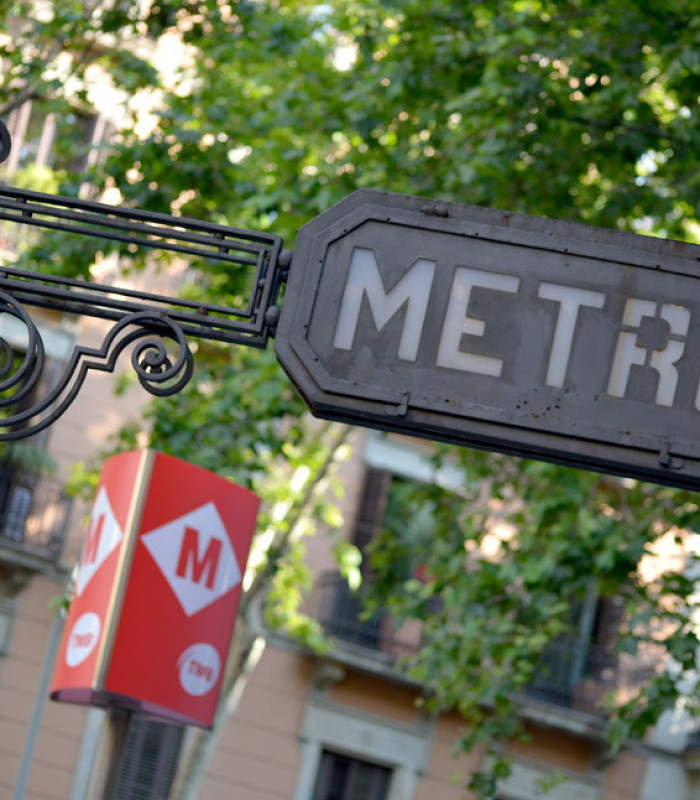
Barcelona Metro
The city’s favorite mode of transportationTransports Metropolitans de Barcelona (TMB), a consortium comprised of two separate entities (Ferrocarril Metropolità de Barcelona and Transports de Barcelona), provides public transit services in the Barcelona metropolitan area. The TMB system also includes other transport modes, including the Tourist Bus, Tramvia Blau (Blue Tramway), Telefèric (Cable Car), and Montjuïc Funicular.
The network supports daily ridership of 2 million people both within the city and 10 surrounding municipalities: Hospitalet de Llobregat, Esplugues de Llobregat, Cornellà de Llobregat, Santa Coloma de Gramenet, Sant Adrià de Besòs, Badalona, Sant Boi de Llobregat, Montcada i Reixac, and el Prat de Llobregat.
The Barcelona Metro has 8 lines, 5 of which are run manually by conductors, and 3 of which are equipped with automated technology that allows trains to run driverless. Each line is identified by the letter “L” followed by a number (from 1-5 or 9-11); each line is also assigned a unique color. The subway network has 159 stations, most of which are adapted for riders with limited mobility, as well as 22 transfer points.
TMB runs from 5:00am to 12:00am Monday through Thursday (except evenings before holidays), and Sundays. On Fridays and evenings before holidays, the schedule is extended from 5:00am to 2:00am. Saturdays feature uninterrupted service. In addition to simple tickets, customers can also purchase combinations of integrated tickets and passes.
Barcelona Tourist Bus
The funnest and most comfortable way to explore the cityFor over 25 years, this service brings over 2 million annual visitors all around the city in unique convertible double-decker buses, giving riders amazing panoramic views of Barcelona’s biggest attractions.
With just one ticket, you can ride on its three routes, which include 6 transfer points and 45 stops. Audio guides are available in 10 different languages. In addition, Tourist Bus customers receive an information guide and a coupon booklet containing special offers to the top sightseeing spots.
Once on board, riders are guided by a professional Barcelona Tour Guide who offers personalized service and answers questions to help visitors get the most out of their trip.


Night Bus
Perfect for nocturnal outingsNitbus (Night Bus) is the network of nighttime buses in the Barcelona metropolitan area, operated by various companies. The network comprises a total of 21 lines, running from 10:00pm or 10:20pm through 5:30am or 6:00am (depending on the line), with buses every 20 minutes, or 3 buses an hour.
Night Buses are identified by the letter “N” (for night), followed by a number from 0-18 or 26-28. Almost all of them stop at Plaça de Catalunya, where you can transfer to another line. Most tickets and passes are valid for use on the Night Bus network, except for the Hola Barcelona and Barcelona Card.
Barcelona Bus Network
Getting around the city by busThe Barcelona Bus Network (TMB) comprises a fleet of over 1,000 vehicles, all adapted for travelers with limited mobility, and coursing 3 different types of line: high performance lines (Hs, Vs, and Ds), conventional lines, and neighborhood lines.
With a firm commitment to protecting the environment, TMB is a pioneer in the use and development of alternative fuels and new technologies. Today, the fleet comprises hybrid vehicles, 100% electric buses with zero emissions, and natural gas buses, altogether making Barcelona’s bus fleet one of the cleanest in all of Europe.
The schedule varies by line, but most routes run from 4:25am to 11:00pm. Timetables posted at each bus stop show riders each route’s exact schedule and frequency. The TMB’s Support Center tracks bus movements in real time and oversees the regularity and reliability of the network.
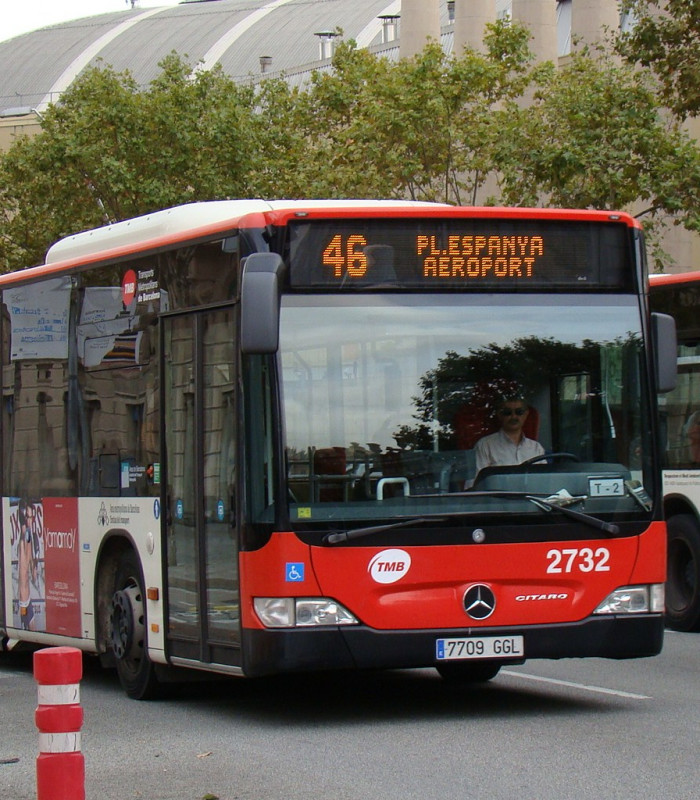
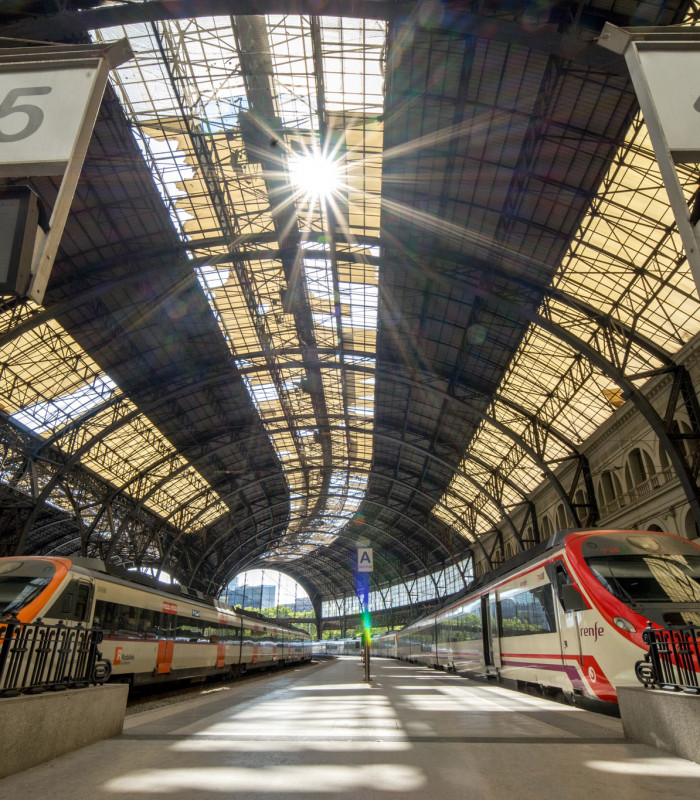
Barcelona Commuter Rail
Rail services around BarcelonaCercanías de Cataluña is the commuter and traveler rail network serving the Barcelona metropolitan area. The service is provided jointly by the Regional Government of Catalonia and Renfe, who manage schedule and route planning, customer service and fare structure, and overall operation and supervision of the service.
The commuter rail network comprises 15 lines: 6 run by Renfe, and 9 run by the Regional Government. These lines are identified by the letter “R” (for Rodalies, Catalan for Local train), followed by a number (1-5 or 7-8). Renfe routes serve 9 stations located throughout the city; the most popular of these is Sants Station, served by many other Renfe routes, allowing customers to make national or international rail transfers, or even connect via rail to the airport.
As more and more people move out of the city, the Regional Rail network of Catalonia has become the largest local rail network in Spain, servicing the principal stations in the area every 5 to 10 minutes. The train has quickly risen as the preferred alternate mode of transit to tackle the mounting traffic experienced in the city.
FGC Suburban Rail
Catalonia Regional Government Railway (FGC)FGC is a Catalonian Public Entity that operates different modes of public transit, principally suburban rail lines in the Barcelona metropolitan area. But FGC also runs other leisure and tourist routes in the area, such as the aerial railway of Montserrat and Valle de Núria, the steam railway along the historic route from Martorell to Monistrol de Montserrat, and the tourist railway of Alt Llobregat.
Just like the Barcelona Metro (TMB), FGC names its urban lines using the letter “L” followed by a number (L6 or L7); similarly, the two local routes are preceded by the letter “R” (R5 and R6). The FGC’s interurban buses are identified by the letter “S”. The principal stations within the city are at Plaça Catalunya and Plaça Espanya.
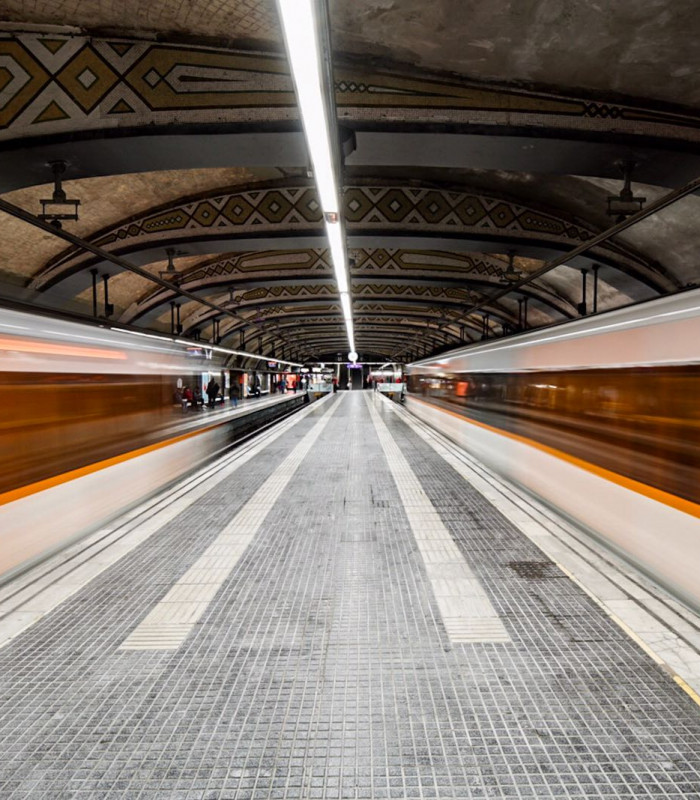
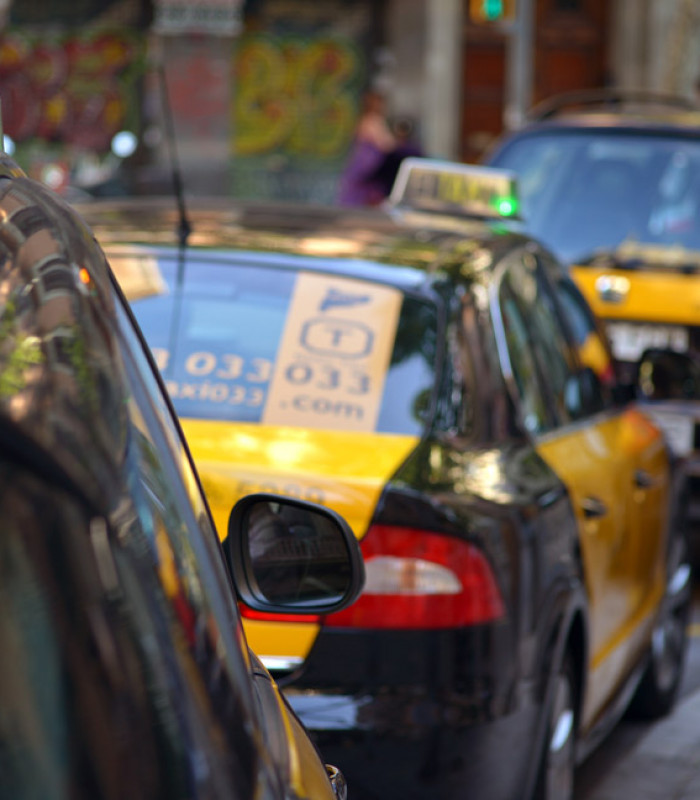
Taxis
Rapid transit at a reasonable costRapid transit at a reasonable cost
Barcelona has a fleet of over 10,000 taxi cabs, easily identifiable by their yellow or black color. Generally speaking, it’s not too difficult to find a free cab when you need one; you can tell by the green light that lights up above the vehicle when it’s available. You can also order a taxi by phone or on your mobile device, using an app.
Like all other transit modes in the city, Barcelona’s taxi fleet is also environmentally friendly, and has for many years been equipped with hybrid vehicles. There are also cabs that accept card payments, and accommodate passengers with limited mobility. Taxis in the city are operated by various independent companies, but their fares are uniformly established by the Barcelona City Council.
TRAM
100% respect for the environmentTRAM is the commercial name under which Barcelona’s tramway services operate. Its network extends only within the Barcelona metropolitan area, and comprises 6 lines with 2 transfer points: Trambaix (T1, T2 and T3) and Trambesòs (T4, T5 and T6).
Both services operate in a total of 9 municipalities over an area of 29.2 kilometers, offering six lines, 56 stops, 11 transfer points, and a fleet of 41 tram cars. The service runs from 7:00am to 10:00pm, and runs every 4-5 minutes or 8-12 minutes, depending on the route.

